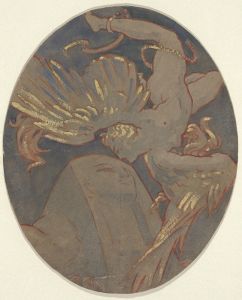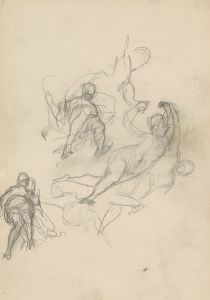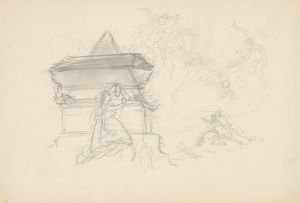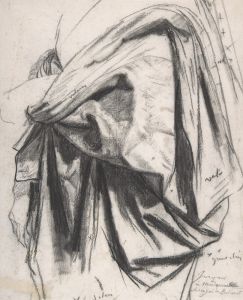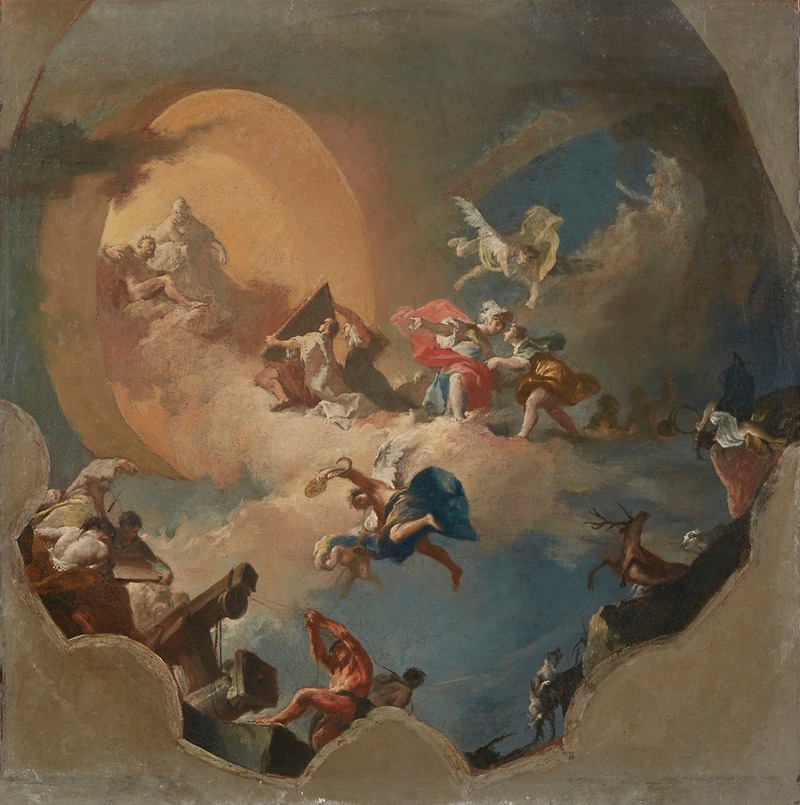
The Apotheosis of the Arts
A hand-painted replica of Giovanni Battista Tiepolo’s masterpiece The Apotheosis of the Arts, meticulously crafted by professional artists to capture the true essence of the original. Each piece is created with museum-quality canvas and rare mineral pigments, carefully painted by experienced artists with delicate brushstrokes and rich, layered colors to perfectly recreate the texture of the original artwork. Unlike machine-printed reproductions, this hand-painted version brings the painting to life, infused with the artist’s emotions and skill in every stroke. Whether for personal collection or home decoration, it instantly elevates the artistic atmosphere of any space.
Giovanni Battista Tiepolo, an Italian painter of the 18th century, is renowned for his grand and imaginative frescoes. One of his notable works is "The Apotheosis of the Arts," which exemplifies his mastery in creating dynamic compositions and his ability to convey complex allegorical themes. Tiepolo's work is characterized by its vibrant color palette, dramatic use of light and shadow, and the fluidity of his figures, all of which are evident in this particular piece.
"The Apotheosis of the Arts" was created during a period when Tiepolo was at the height of his artistic career. He was known for his ability to transform large architectural spaces with his frescoes, bringing ceilings and walls to life with his imaginative scenes. This work is a testament to his skill in integrating painting with architecture, creating an illusionistic space that extends beyond the physical boundaries of the room.
The painting itself is an allegorical representation, a common theme in Tiepolo's work, which often involved the depiction of abstract ideas through personification and symbolism. In "The Apotheosis of the Arts," Tiepolo celebrates the triumph and elevation of the arts, a theme that reflects the cultural values of the Enlightenment period, which emphasized the importance of art, science, and intellectual pursuits.
Tiepolo's composition is typically dynamic, with figures arranged in a swirling motion that guides the viewer's eye across the scene. The figures are often depicted in mid-action, their poses conveying a sense of movement and vitality. This dynamism is enhanced by Tiepolo's use of foreshortening, a technique that creates the illusion of depth and three-dimensionality on a flat surface.
The color scheme of "The Apotheosis of the Arts" is vibrant and varied, with Tiepolo employing a range of hues to differentiate between the figures and the background. His use of light is particularly noteworthy; he often painted with a luminous quality that gives his figures an ethereal appearance, as if they are bathed in a celestial glow.
Tiepolo's ability to convey complex themes through allegory is evident in the way he personifies the arts. Each figure in the painting likely represents a different artistic discipline, such as painting, sculpture, music, or literature, though the specific identities of these figures are not always explicitly defined. This ambiguity allows viewers to interpret the painting in various ways, engaging with the work on multiple levels.
"The Apotheosis of the Arts" is a reflection of Tiepolo's broader oeuvre, which often explored themes of mythology, religion, and history through a lens of grandeur and theatricality. His work was highly sought after by patrons across Europe, and he completed commissions for churches, palaces, and public buildings, leaving a lasting impact on the art world of his time.
In summary, "The Apotheosis of the Arts" by Giovanni Battista Tiepolo is a masterful example of 18th-century fresco painting, showcasing the artist's skill in composition, color, and allegory. It stands as a celebration of the arts and a testament to Tiepolo's enduring legacy as one of the great painters of the Baroque period.







